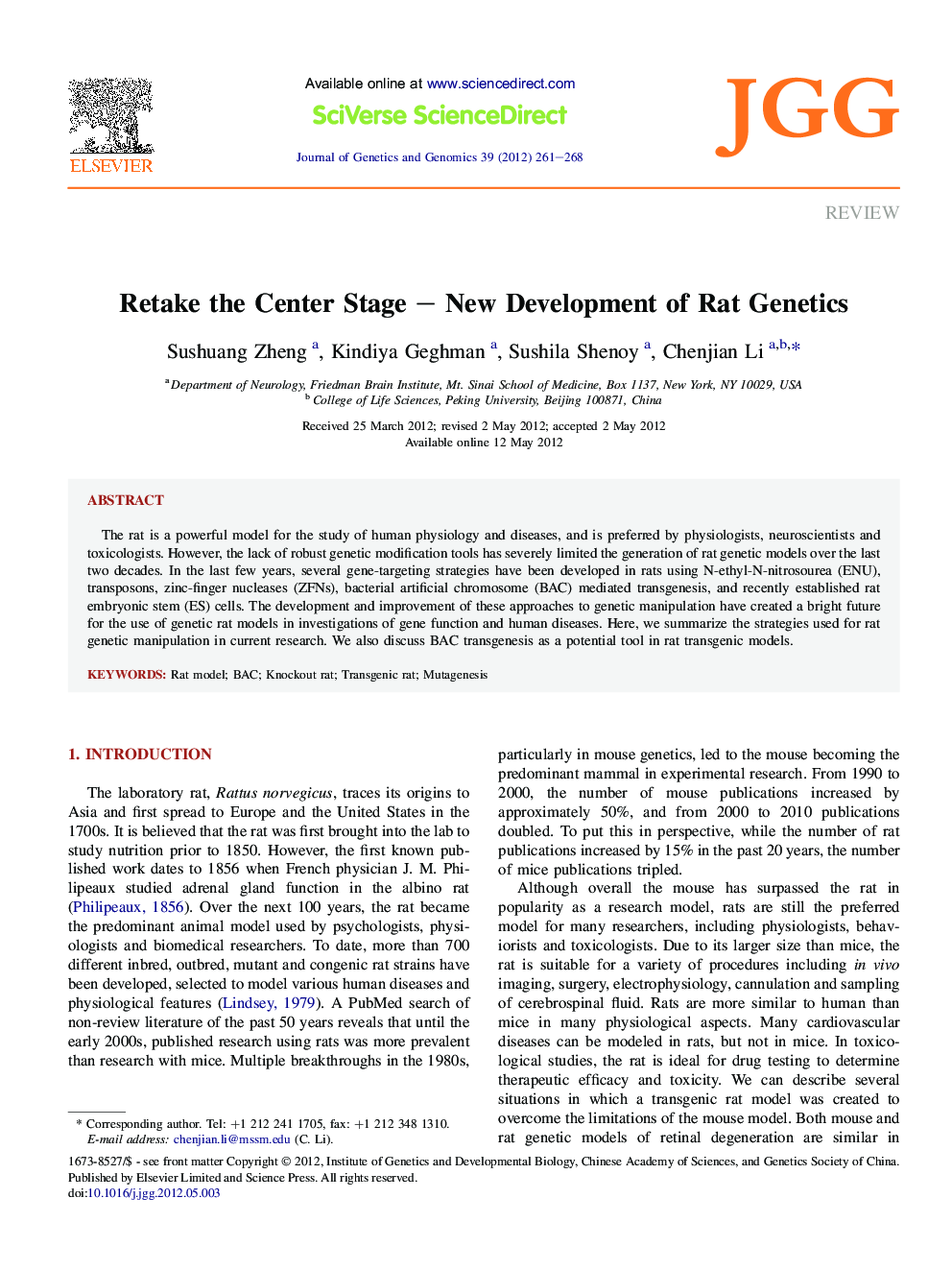| Article ID | Journal | Published Year | Pages | File Type |
|---|---|---|---|---|
| 2787549 | Journal of Genetics and Genomics | 2012 | 8 Pages |
The rat is a powerful model for the study of human physiology and diseases, and is preferred by physiologists, neuroscientists and toxicologists. However, the lack of robust genetic modification tools has severely limited the generation of rat genetic models over the last two decades. In the last few years, several gene-targeting strategies have been developed in rats using N-ethyl-N-nitrosourea (ENU), transposons, zinc-finger nucleases (ZFNs), bacterial artificial chromosome (BAC) mediated transgenesis, and recently established rat embryonic stem (ES) cells. The development and improvement of these approaches to genetic manipulation have created a bright future for the use of genetic rat models in investigations of gene function and human diseases. Here, we summarize the strategies used for rat genetic manipulation in current research. We also discuss BAC transgenesis as a potential tool in rat transgenic models.
